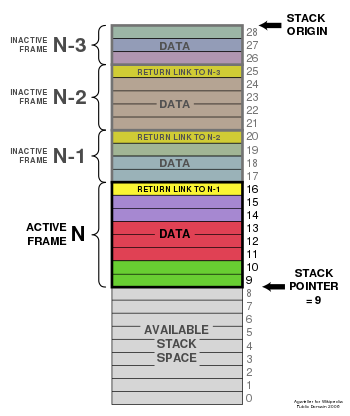This article has multiple issues. Please help improve it or discuss these issues on the talk page. (Learn how and when to remove these messages)
|

Stacks in computing architectures are regions of memory where data is added or removed in a last-in-first-out (LIFO) manner.
In most modern computer systems, each thread has a reserved region of memory referred to as its stack. When a function executes, it may add some of its local state data to the top of the stack; when the function exits it is responsible for removing that data from the stack. At a minimum, a thread's stack is used to store the location of a return address provided by the caller in order to allow return statements to return to the correct location.
The stack is often used to store variables of fixed length local to the currently active functions. Programmers may further choose to explicitly use the stack to store local data of variable length. If a region of memory lies on the thread's stack, that memory is said to have been allocated on the stack, i.e. stack-based memory allocation (SBMA). This is contrasted with a heap-based memory allocation (HBMA). The SBMA is often closely coupled with a function call stack.
